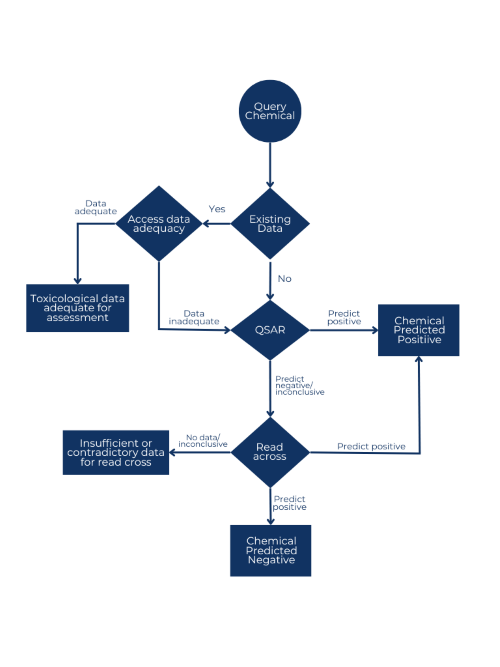Neurotoxicity
Neurotoxicity risk assessment is essential to provide solutions with which the impact of products on neuronal functions throughout the life cycle can be prohibited. With our neurotoxicity solution package, you can characterize your compounds for concerns of their potential of being a neurotoxin.
- About
- Our solutions for you
- Our services
- Partner contributions
- Request further information
- Order links
About

Neuronal health and neuroprotection are key for preventing the development of neuronal diseases. One major concern of neuronal dysfunction lies in the uptake of substances and chemicals throughout life, which can impact normal neuronal cell function and lead to acute or chronic toxicity. Especially with the fast advances in technology where regulatory guidelines are still missing, new approach methods are valuable in evaluating chemicals and nanoforms, which can reach the central nervous system where they might induce the activation of toxic effects. Integration of such evidence can support the risk assessment of products to avoid neurotoxicity. Nevertheless, until now risk assessment in this field has been challenging since the molecular pathways that lead to neurotoxicity, with which one could characterize compounds by key event assays, are still not fully understood. To face this challenge, we collaborate with partners not only to reveal new possibilities for assays based on new findings in research but to also bring together the existing knowledge as best as possible and to use it with the newest computational tools to ensure the most effective neurotoxicity prediction and assessment.
Our services

Image adapted from EFSA Guidance: Advanced tools for the safety of nanomaterials
Our neurotoxicity solution package includes data analysis, modeling, and in vitro testing supporting the evaluation of neurotoxicity and exposure concerns for products and their risk assessment from the early stages of development throughout the life cycle. Such concerns are important in drug development, selection of cosmetic and food ingredients, and design of advanced materials and formulations.
In silico strategy

Our first tier in silico approach collects a broad range of already existing data and knowledge which is used to characterize new compounds due to specific chemical or biological features, integrates it with properties of known compounds and calculates their impact on neuronal mechanisms. This artificial intelligence approach allows to model the prediction of a single compound or a set of compounds as neurotoxic or non-toxic and to calculate whether there are specific concerns of the impact on neuronal development and function in organisms. Concerns and uncertainties can be subsequently addressed in lower tier testing strategies. Our services include:
In silico modeling
- Our in silico modelling and in vitro testing workflows are anchored to key events of Adverse Outcome Pathways (AOPs).
- We can apply a variety of algorithms and machine learning techniques to SaferNeuron™ datasets supporting the building of reference and customised models.
AI/Machine Learning
- We have leading expertise in developing and validating QSAR models.
- We apply our machine learning expertise to the development of models in SaferNeuron™ applications including customised versions for customers.
- Our AI team has competency in extracting targeted knowledge from information collections (documents, abstracts etc.) and organising it as structured information e.g., available to applications from a customised EdelweissData™ instance.
Data Management
- Our EdelweissData™ approach to data management organises all data within our system using best data practices and standards.
- All metadata and data is harmonised and aims for completeness and integrity.
- Data processing workflows are organised as reproducible in silico protocols with instances stored within the system for future reference.
- All in silico and in vitro protocols are fully described and stored in the system.
- Secure customer data management solutions can be provided through premium customer accounts on a secure cloud.
Partner contributions
There is still a lack of understanding the biological mechanisms which lead to diseases related to the nervous system, such as neurodegenerative diseases; hence there are challenges to face when characterizing chemicals for neurotoxicity risk assessment. Therefore, we keep up to date with newest findings in cutting edge research to develop new assays for neurotoxicity key events and to improve the accuracy in our prediction models. We can incorporate the following assays and models from our partners:
Biobide Services
- Target Validation
- Disease Model Generation
- General Toxicity Assays
- Specific Toxicity Assays
- Efficacy Assays
- Ecotox Assays
> Read more
BioTalentum
- Services: Cellular models for in vitro toxicology, gene engineering and bioinformatics.
- Products: human iPSC-derived cell types.
> Read more
CAAT key areas
- Consumer protection
- New Approach Methodologies
- 3Rs (Replace, Reduce, Refine)
- Toxicological testing strategies and systems toxicology
- Information and education on NAMs and 3Rs
> Read more
RISK-HUNT3R
- Toolbox for in silico risk assessment supporting IATAs in development neurotoxicity
Reference:BBD-STA-NA
Vendor:Biobide
Product: Zebrafish Organ Specific Toxicity Assays: Neurotox Assay